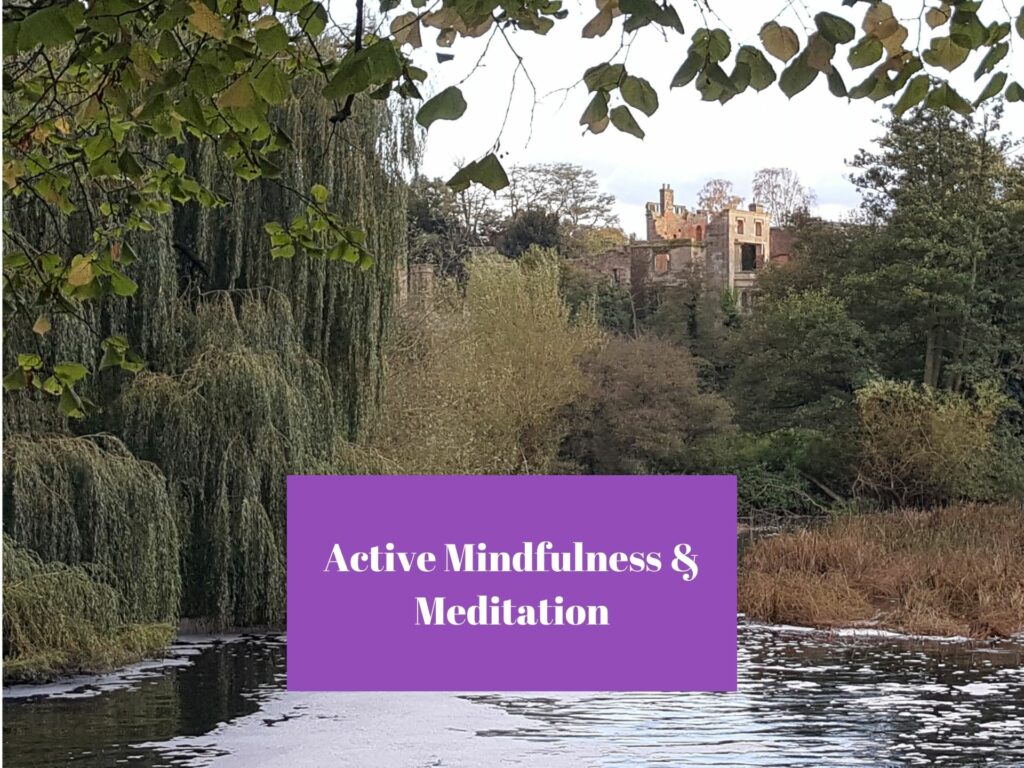
Active Mindfulness and Meditation
Mindfulness and meditation normally involve a belief that we have to sit still, , turn off our mind so it can become completely blank and just exist in an alternative state resembling some sort of zen space. The reality is very different.
I’ve never been particularly good at the art of mindfulness and meditation and to me they mean pretty much the same thing – Mindfulness is the awareness of “some-thing,” while meditation is the awareness of “no-thing” and they complement each other. My challenge is that I can never sit still for long enough, my mind doesn’t stay quiet and I get the fidgets. As a result I become frustrated with myself and the process as I spend the whole time trying to get back on song, back into the quiet zone where meditation and contemplation can occur in peace. It just doesn’t work for me. Add to that the other issue – I fall asleep. Quite simply sitting there quietly with my eyes shut, listening to some peaceful music or spoken meditation words and support I tend to nod off and then wake up 5 or 10 minutes later with a start (and some dribble on my shirt). So for me, in general, it has never worked particularly well.
However, the flip side for me is active meditation and mindfulness. This is something I’ve always done, but not focused on because I never realised that that’s what it was. I’m referring to the art of doing an activity that just entertains the brain, allowing your mind to drift and relax. Consider the numerous times when you drive somewhere and upon arriving you can’t recall much of the journey that has just taken place. It’s not because you fell asleep or were dangerously inattentive in your driving, it’s because you totally tuned out. You were just thinking about something else or not thinking about anything at all. At the point of arrival, you probably felt a little bit fresh, having recovered and rebooted during the drive.
Driving can be a form of mindfulness or meditation and this also happens when you’re doing something that’s active. Hobbies in the olden days were a classic example of this. Imagine somebody in their shed, working with wood, working with materials building and creating something. This can extend to many arts and the crafts and the mental support they bring for the person who creates a new stool, a new table or has knitted a jumper. This whole process is active mindfulness and meditation, enabling you to switch off and enjoy being in that moment.
I remember years ago reading something that said it’s not about completely blanking your brain and switching off entirely, because that rarely happens. It’s about switching off, and then when your brain goes off on tangents and gets excited, you can bring it back in again. Which means you can allow your mind to drift. You drift in, you drift out, you drift in, you drift out again.
A perfect example of drifting in and out for me occurs when I swim, and more specifically when I am open water swimming. When I’m in a lake, a river or even in the sea, and I am just swimming any short or longer distance, I’m focusing on whatever distance I’m doing and the process of taking stroke after stroke after stroke.
For me counting the strokes is something I do to pass the time as I swim along. I also know how many strokes it takes me to swim the length of a 25m or 50m pool. This allows me to roughly calculate my distance when I swim between points in the water or landmarks or the banks. 100 strokes for me equates to approximately 250 metres, there or thereabouts, it doesn’t need to be more accurate than that. (I can always get more precise statistics from my GPS watch if I need it). These numbers are not there to challenge me it’s something that helps me keep on going, while the rest of the time, I’m looking at the fish, the bird life or the beautiful scenery, the other swimmer that I’m overtaking or being overtaken by. At the end of that activity my brain feels fresh and alert and added to that during the swim I may well have had a couple of excellent ideas that have popped into my mind, giving me some clarity that will help in my activities for the rest of the day.
The same goes for climbing up mountains or walking in the hills. There are certain parts of climbs and long walks, where it can become a little less interesting or even boring. While that is going on I switch to counting steps, footstep after footstep when going uphill, trudging along a path or trudging over the Dales and Monroes. When I’ve done another 100 steps, another 450 steps, I’ve covered a certain distance and am now closer to that destination. We did similar tactics with my youngest child, playing word association games while walking to distract him from the task in hand!
At the end of your activity there is that feeling of elation, a sense of clarity of the brain, while you have been switching off and rebooting. Mindfulness and meditation isn’t for everyone, I know wasn’t for me for many years, now it’s something I do for pleasure and recharging. When I’m doing my activities, such as swimming, I do find that it becomes very simple to get into the flow, benefit from some real mental relaxation: I reboot and refocus, which helps my creativity and as a consequence I make some great decisions.

